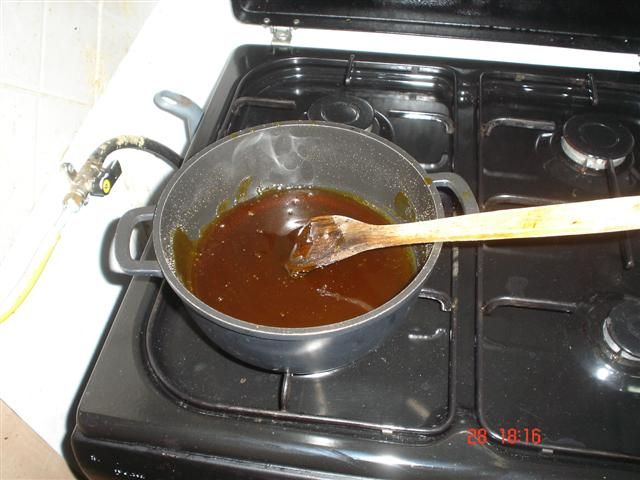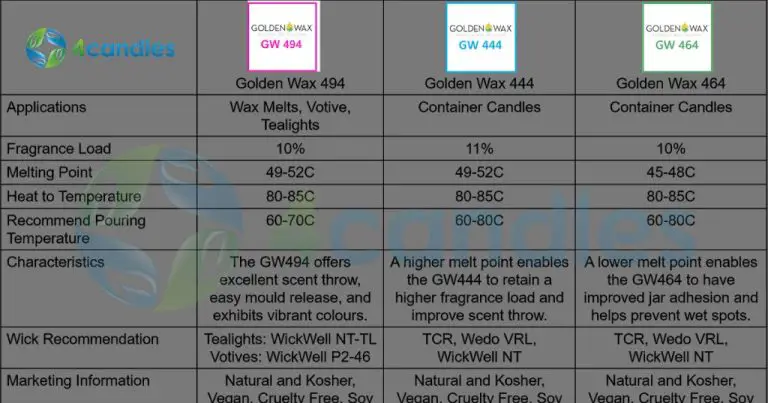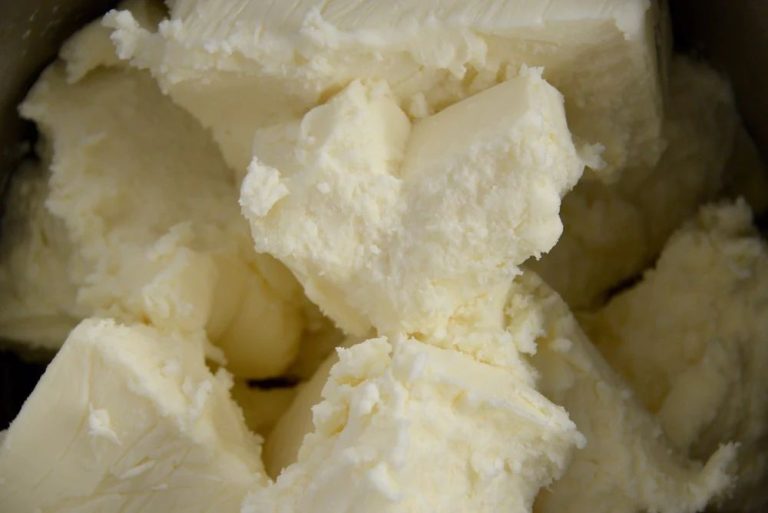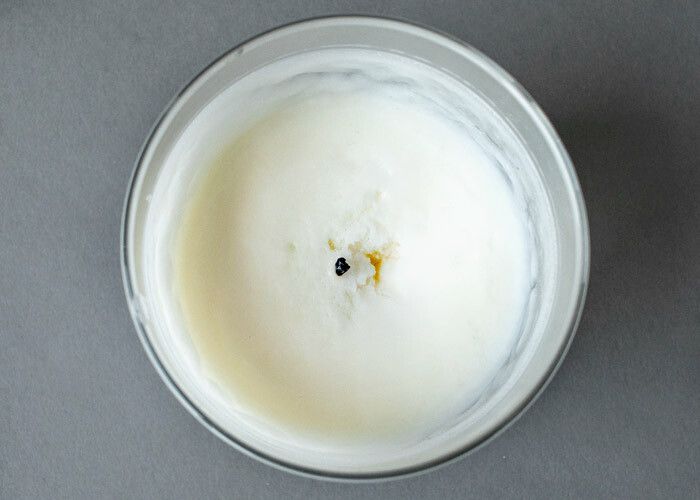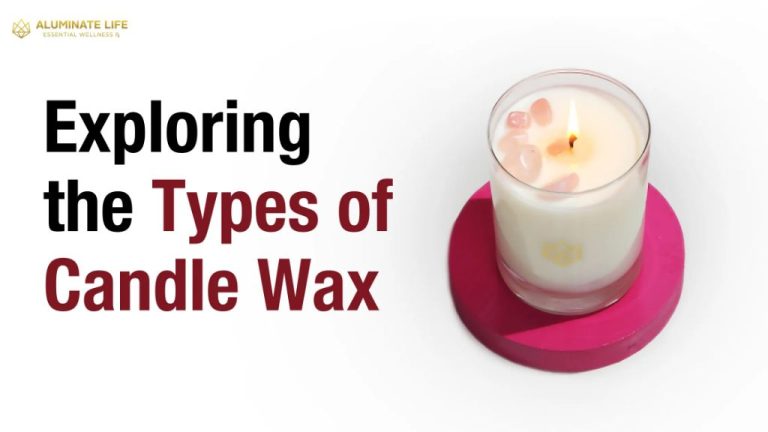Is Candle Wax And Paraffin Wax The Same?
Introducing Candle Wax
Candle wax refers to the substance that makes up the body of a candle. It is usually made from paraffin, beeswax, soy, palm, or gel wax. The wax provides the fuel for the candle flame as it melts and vaporizes. The type of wax impacts characteristics like burn time, fragrance throw, and appearance. Common candle waxes include:
- Paraffin – Derived from petroleum, it is the most widely used candle wax due to its low cost and easy availability. Paraffin wax candles tend to burn longer than other waxes.
- Beeswax – Made by honey bees, beeswax produces a sweet honey aroma when burned. However, beeswax candles are more expensive than paraffin.
- Soy wax – Made from hydrogenated soybean oil, soy wax is a renewable and environmentally friendly option. Soy candles have a lower melting point than paraffin.
- Palm wax – Derived from palm oil, palm wax is hard and opaque. It makes durable container candles.
- Gel wax – A mixture of paraffin and polymers that produces a transparent, rubbery gel. Gel candles contain dyes and scents.
The wax type affects burn time, fragrance, appearance, cost, and other candle qualities. Most modern candles use paraffin wax, but other waxes have benefits like being more eco-friendly. Paraffin is the most common candle wax today.
What is Paraffin Wax?
Paraffin wax is a white or colorless soft, solid wax substance. It is made from saturated hydrocarbons, which are derived from petroleum, coal or oil shale (https://www.healthline.com/health/paraffin-wax). The process of making paraffin wax involves extracting and distilling crude oil to isolate the straight-chain hydrocarbons. These long hydrocarbon chains give paraffin wax its soft and malleable properties.
Some key properties of paraffin wax include:
- Soft, solid state at room temperature
- Melting point between 47°C and 64°C (https://www.medicalnewstoday.com/articles/paraffin-wax)
- Chemical inertness and low reactivity
- Malleability that allows it to be infused with colorants and fragrances
- Moisture-resistant nature
These attributes make paraffin wax versatile for applications ranging from candles to cosmetics to 3D printing.
Paraffin Wax as a Candle Wax
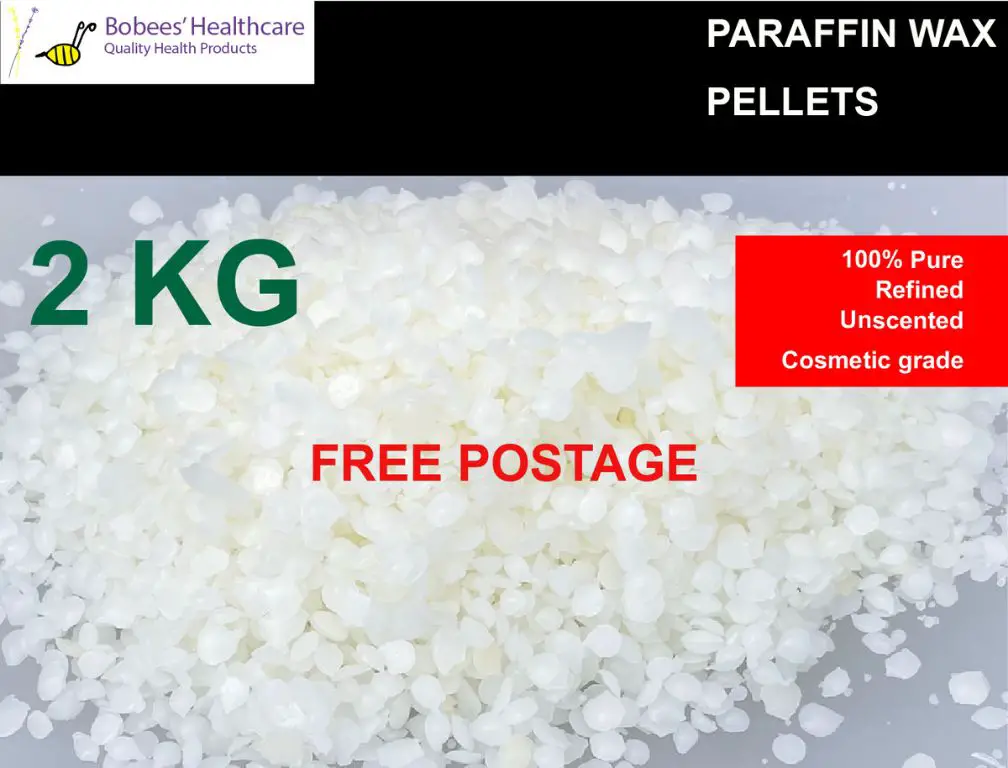
Paraffin wax is one of the most common waxes used to make candles today. It is derived from petroleum and is relatively inexpensive compared to natural waxes like beeswax. Paraffin has some advantages as a candle making material:
- It is affordable and widely available.
- Paraffin wax has a high melting point, which makes it suitable for pillar candles and votives.
- It allows for scent and color to be added easily.
- Paraffin burns cleanly and completes melts as it burns.
However, paraffin also has some drawbacks:
- It is not from a renewable source, unlike natural waxes.
- Some claim paraffin releases compounds like toluene and benzene into the air when burned, though research shows paraffin candles do not release significant levels of toxic chemicals.
- It can produce more soot than other waxes.
Overall, paraffin is valued in candle making for its versatility and affordability. But some candle makers are shifting to more natural waxes for ecological reasons and perceived health benefits.
Beeswax
Beeswax is a natural wax produced by honey bees. It is secreted from special glands on the abdomens of worker bees and used by them to build the walls of the honeycomb. Beekeepers harvest beeswax from the honeycomb when extracting honey.
As a candle wax, beeswax has some notable pros and cons [1]:
Pros:
- Burns cleanly – Beeswax candles emit negative ions that help clean the surrounding air.
- Long-lasting – Beeswax has a high melting point which makes beeswax candles last longer.
- Natural – Beeswax is all-natural, non-toxic, and biodegradable.
- Honey aroma – Beeswax candles have a light, sweet honey scent.
Cons:
- Expensive – Beeswax tends to be pricier than other candle waxes.
- Soft flame – Beeswax candles produce a dimmer flame compared to paraffin.
- Can get brittle – Beeswax can become brittle and crack over time.
- Limited colors – Beeswax candles come in natural honey colors.
Overall, beeswax is valued for its natural properties but its drawbacks like cost and soft flame make it less than ideal for all candle-making purposes.
Soy Wax
Overview of soy wax:
Soy wax is a vegetable-based wax made from hydrogenated soybean oil. It emerged as an alternative to paraffin wax and other petroleum-based waxes used for candle making. Soy wax is biodegradable and derived from a renewable resource. It has become popular among artisanal and eco-friendly candle makers.
Pros: Soy wax is known to hold fragrances very well, making it excellent for scented candles. It also burns slower and cooler than paraffin wax. Soy wax candles are cleaner burning and emit less soot. Since soy wax is made from a plant, it is renewable and biodegradable. Soy wax is also nontoxic if ingested.
Cons: Soy wax may not always have as strong of a scent throw compared to paraffin candles. It is also more susceptible to frosting and sweating in warmer environments. Additionally, soy wax is typically more expensive than paraffin wax.
Overall, soy wax is considered a high-quality alternative wax for candle making. Its renewable nature and ability to hold scents makes it popular among artisanal candle makers and customers seeking natural, eco-friendly products.
Palm Wax
Palm wax is derived from the fruit of palm trees, specifically the Elaeis guineensis tree native to Africa. The palm fruit oil is extracted and hydrogenated to make a hard vegetable wax used in candle making. Some key facts about palm wax include:
Palm wax has a higher melting point than other waxes, around 145°F, making it ideal for candles meant to be used in warmer environments. It also blends well with other waxes like soy and paraffin. Palm wax candles give off a crystalline appearance and create a smooth pool of liquid wax while burning (https://tlccandleco.com/blogs/tlc-talks/6-different-types-of-candle-waxes-and-choosing-the-right-one).
Some benefits of palm wax for candle making are its excellent scent throw, high clarity, and ability to hold fragrances. It also creates crystals in the cooled wax, giving candles an attractive finish. The high oil content allows palm wax to burn slowly and cleanly.
However, there are sustainability concerns around palm wax. Palm oil production is linked to deforestation, habitat loss for wildlife like orangutans, and poor labor practices. Many environmental groups call for reduced use of palm products. Large candle makers like CandleScience have discontinued palm wax use due to these concerns (https://www.candlescience.com/learning/the-problem-with-palm-wax/). Consumers may also avoid buying candles made from palm wax.
Overall, palm wax has beneficial properties for candles, but its environmental impact is questionable. Candle makers should weigh these factors carefully when deciding whether to use sustainable palm wax or an alternative like soy, beeswax, or paraffin.
Gel Wax
Gel wax is a relatively new type of candle wax that has gained popularity in recent years. It has a smooth, thick, gel-like consistency and is made from a blend of mineral oil and polymer resins. Unlike traditional waxes, gel wax doesn’t require a wick or vessel; it can be poured directly into a container and burns pool-lessly.
Some key pros of gel wax are its excellent scent throw, vibrancy of colors, and long burn times. Gel candles can burn for up to 200 hours, much longer than typical paraffin or soy wax candles. The wax also allows for creative designs like embeds and layers. Gel wax has a clean, soot-free burn as well.
However, gel wax can be more challenging to work with compared to other waxes. It requires pouring at precise temperatures and sets up quickly. The cost per pound is generally higher too. Gel wax may not be suitable for certain applications like container candles, since it can slump or lose its shape without a vessel (Craftybase.com, 2023).
Overall, gel wax is ideal for flameless wax melts, embeds, and novelty items. Its vibrant colors and lifelike textures allow endless design possibilities. While pricier and trickier to use, gel wax offers excellent performance that mirrors its synthetic polymer makeup.
Paraffin vs Other Waxes
Paraffin wax is commonly compared to natural waxes like beeswax and soy wax in candle making. Each type of wax has its own properties and advantages.
Beeswax is considered more natural than paraffin since it is produced by honeybees. Beeswax has a higher melting point than paraffin, so beeswax candles burn brighter and longer. However, beeswax is more expensive and can release more smoke and odor when burning compared to paraffin (https://www.beehivecandles.com/help/beeswax-vs-paraffin/).
Soy wax is made from soybean oil and is also marketed as a natural alternative to paraffin. Soy wax holds scent well and burns cleanly. However, soy wax is softer than paraffin and can be prone to frosting on the candle surface. Soy also does not hold scent as long as paraffin (https://jessicawellinginteriors.com/best-wax-for-candles/).
In general, paraffin remains the most popular candle wax due to its excellent scent throw, smooth burning, and affordability. But natural waxes like beeswax and soy offer renewable and eco-friendly options for candle making.
Making Candles
Making candles with paraffin wax is a common practice. Paraffin wax has a low melting point which makes it easy to work with. According to https://www.vedaoils.com/blogs/candlemaking/candle-making-with-paraffin-wax, paraffin wax can be melted in a double boiler on the stove or in the microwave. Once melted, add fragrance or dye as desired and pour into candle molds or jars. The wax will cool and harden into candles.
Beeswax and soy wax are also commonly used in candle making. According to https://www.amazon.com/live/video/0a733e896ce2406d9143c66096fd9f09?ref_=dp_vse_rvc_1, beeswax has a nice natural scent and burns longer than paraffin but can be more expensive. Soy wax is made from soybean oil, is eco-friendly, and has good scent throw.
Other waxes like palm wax and gel wax can also be used for different candle styles. The main methods are the same – melting the wax, adding fragrance, and pouring into containers. The type of wax impacts characteristics like scent, burn time, texture, and price.
Conclusion
In summary, while paraffin wax is commonly used to make candles, there are several key differences between paraffin and other types of candle waxes:
– Paraffin is a petroleum-based wax, while beeswax and soy wax are natural waxes from bees and soybeans. Palm wax comes from palm trees.
– Paraffin burns cleanly and evenly, but some find the scent unpleasant. Beeswax and soy wax have a mild, natural scent when burning.
– Paraffin is the most cost-effective option. Beeswax and soy wax are more expensive but appeal to those looking for a natural, eco-friendly option.
– Paraffin releases toxic fumes if overheated. Beeswax and soy wax produce less soot and release fewer toxins when burned.
– Paraffin is easy to work with and makes consistent candles. Natural waxes can be more finicky but produce candles with characteristics some prefer.
While paraffin remains the most widely used candle wax, alternatives like soy and beeswax provide options for those seeking natural materials. The choice ultimately comes down to performance, scent, cost, and environmental impact preferences.

